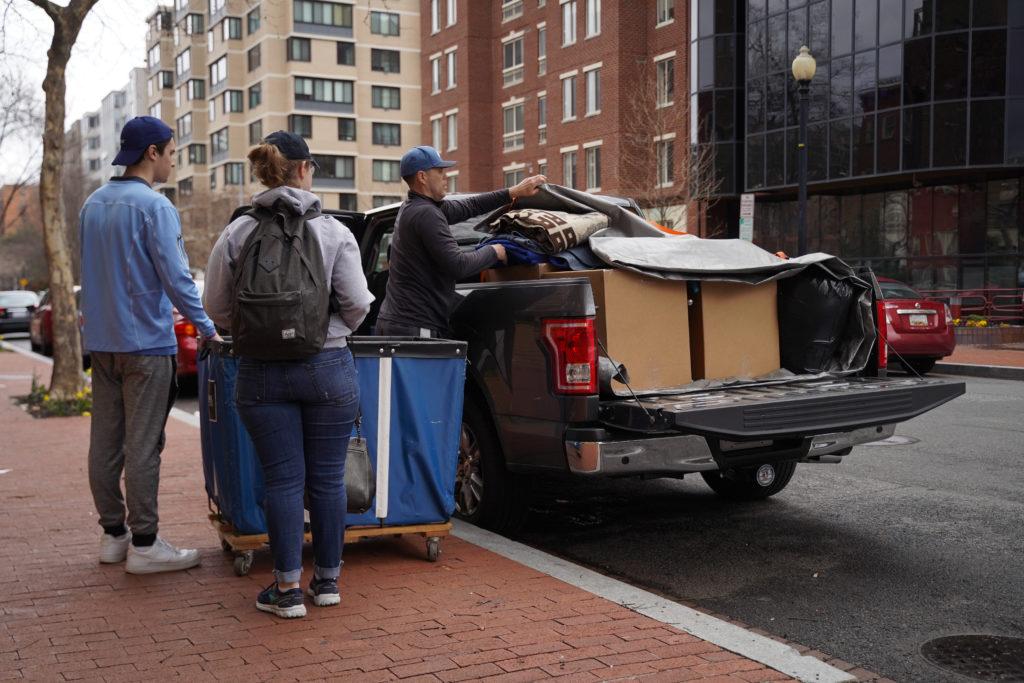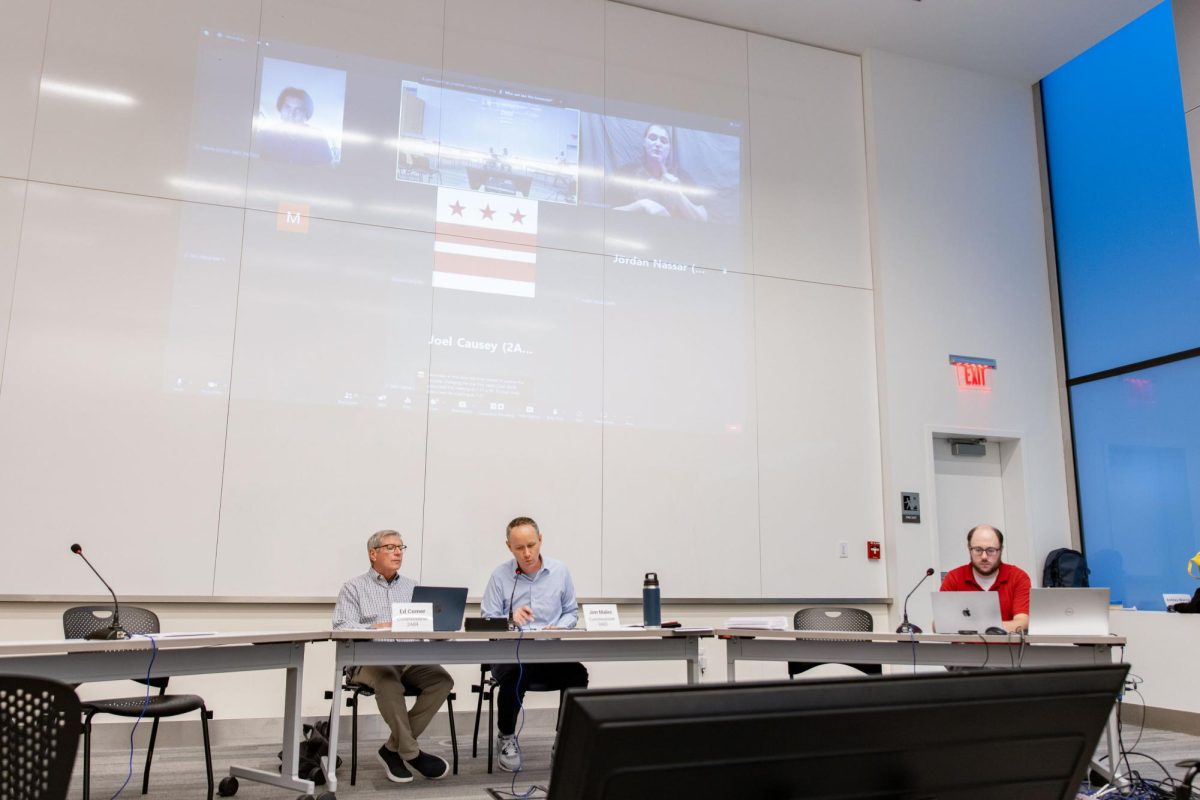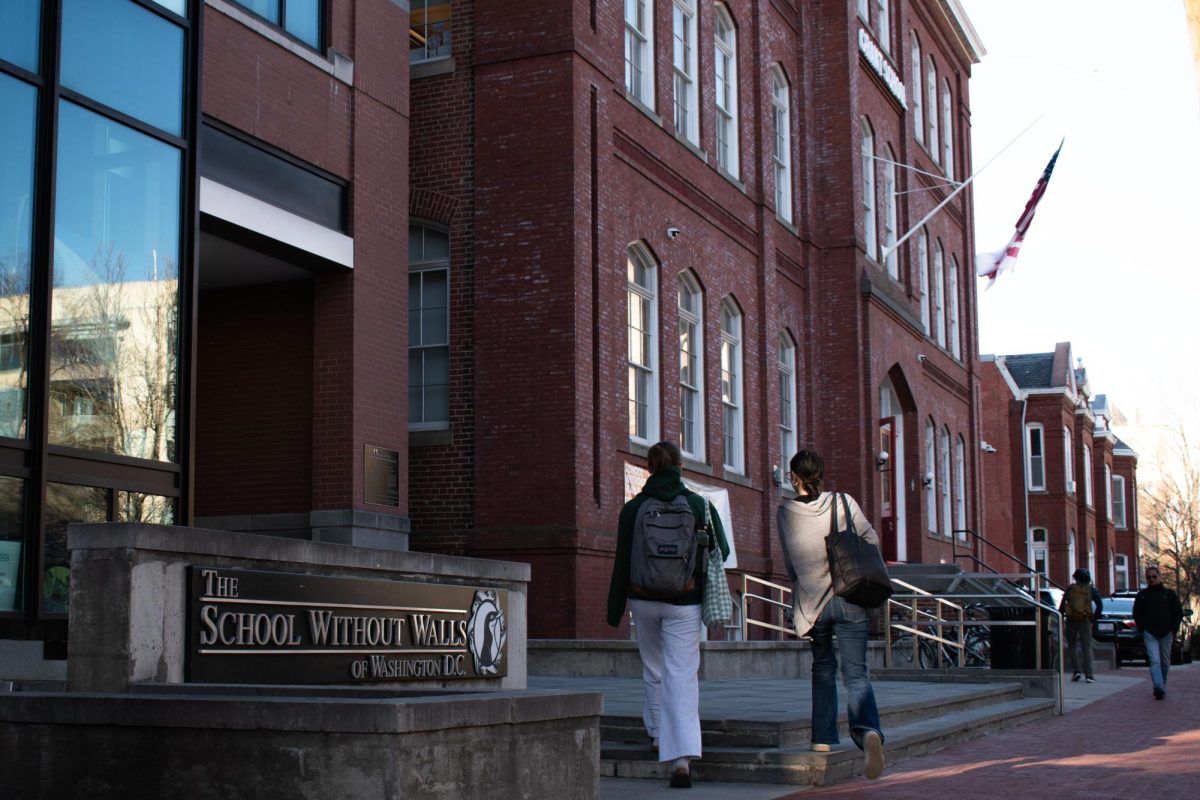As some students return to residence halls and off-campus apartments this semester, Foggy Bottom residents are raising concerns about a potential uptick in COVID-19 cases in the months ahead.
University President Thomas LeBlanc said at a Faculty Senate meeting earlier this month that officials expect about 500 students to live on campus this fall, but that does not include a wave of students moving into off-campus apartments dotted throughout the neighborhood. Local leaders said permanent residents are worried house parties and other large gatherings could be new spreaders of COVID-19 throughout the community, as the neighborhood tries to communicate to students the need to enhance health and safety through social distancing.
Foggy Bottom Association President Marina Streznewski said she is concerned that students that are not properly socially distancing will threaten the lives of permanent elderly residents with pre-existing conditions that make the risk for infection relatively high.
“What we see is that the younger people are not wearing masks,” Streznewski said. “We see people having parties, and they seem to think ‘we’re just inviting people around our own age.’ They don’t understand the risk that poses to people who are older, and there’s an awful lot of them in Foggy Bottom.”
The World Health Organization found last week that young people have been the main drivers of spreading the virus in recent months. Several colleges like Notre Dame University and the University of North Carolina closed in-person classes in part because students gathering in large groups upon returning to campus led to an increase in cases.
Streznewski said returning students must act responsibly and be conscientiousness of the surrounding Foggy Bottom community. She said local leaders will possibly hold outdoor meetings in Washington Circle where residents and returning students can discuss safety precautions.
“It means giving up things that are enjoyable, that’s hard, but we got to do it,” she said. “We as human beings and Americans are capable of doing this.”
Trupti Patel, a Foggy Bottom and West End Advisory Neighborhood commissioner, said neighbors are worried that students returning to Foggy Bottom aren’t considering the community’s “very susceptible and most vulnerable members” during the pandemic.
“We have constituents that are in their 70s and 80s,” Patel said. “They are terrified of getting sick. I understand people want to socialize and gather. Their need for human interaction and human dynamics is vital, but this is a sacrifice that is being asked to be respectful of the neighbors.”
She said her district includes 10 apartment buildings, four of which are popular among students: 2400 Pennsylvania Avenue Apartments, The Claridge House Condos, The 925 Apartments and The Bader Condominium. Patel said students across the country neglecting public health precautions during the pandemic have stirred concern that the same will occur in Foggy Bottom.
Patel said permanent residents and students need to communicate with each other to keep the community from splitting between differing public health standards that could influence the caseload in Foggy Bottom. She said even as the health of elderly citizens remains a top priority, students’ needs are also critical to uphold in her district.
“There are neighborhood organizations, groups that want to make sure their voices are heard to the students,” Patel said. “And the students have a right to express what their expectations are.”
As the neighborhood fears returning students will contribute to a rise in virus cases, students living off-campus said they are looking to find a glimmer of the college experience they once had, even during the pandemic.
Tucker Hamilton, a junior living in an I Street apartment in the fall, said he doesn’t plan to self-isolate in Foggy Bottom unless he contracts the virus. He said he and his friends will continue to go out but will also wear masks, sanitize and follow public health guidelines outlined by the District and the Centers for Disease Control and Prevention.
“When I go out, I’m always going to be contributing to as well as accepting some risk of contracting or spreading coronavirus,” Hamilton said. “However, because the infection rate is so high anyways, it’s basically a moot point to consider myself to be something so special.”
Alaina Shuman, a junior who returned to D.C. from San Francisco last week, is living at Varsity on K, located just off of Washington Circle. She said the need for college students to socialize with one another means students returning to the area “definitely” won’t social distance.
“It’s so hard to be 20 years old, near your friends, but be told to stay in your apartment or stay in your room,” Shuman said. “I have very little faith in GW students to be quite honest because there’s just so many temptations to go out with your friends and party. It’s putting everyone at risk.”
She said students may struggle to manage self-isolation and social distancing “for mental health reasons,” but students must party less and spend more time alone to contain the virus’ spread in Foggy Bottom. She said she will keep interactions with her friends and family and limit socialization in large gatherings to ensure at-risk elderly neighbors remain safe.
“I will be spending a lot of time on my own – way more than a normal semester,” Shuman said. “That’s just something I have to adjust to.”
Despite the risks that students carry into the Foggy Bottom neighborhood, Shuman said she hopes to balance safety with a return to the college neighborhood during the pandemic.
“I chose to return to D.C. because I couldn’t put my life on hold anymore,” Shuman said. “And if I could do it in a safe way, it felt like it was the right thing for me to do.”
Jarrod Wardwell contributed reporting.







